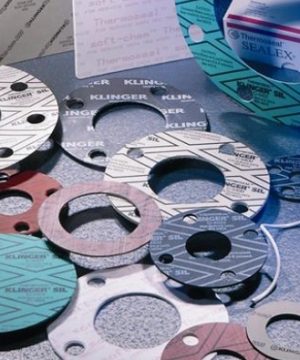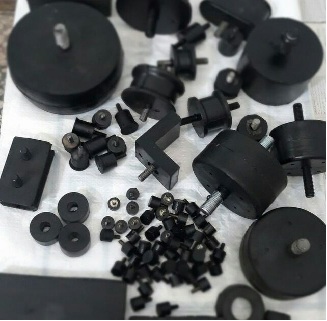The gasket is a sealing member that is placed between the two faces of the flange and is held using the compressive force of a set of screws that are located around the edge of the flange. Gaskets are made of different materials in different applications. Gaskets must be made and selected in such a way that they can survive in the fluid temperature and pressure during the time of their connection.
The three standards that are widely used for the design of gaskets include the following:
ASME B16.20
ASME B16.21
API 6A
Classification of gaskets by gender
1- Metal gasket
2- Semi-metallic gasket
3- Non-metallic gasket
Classification of gaskets according to the type of front flange
1- Flat gasket
2- Spiral gasket
3- Metal cover gasket
4- Ring gasket
ring gasket
This type of gasket is typically made of metal, usually soft steels and their alloys. These gaskets are forged rings designed to fit into the RTJ flange grooves. They are commonly used in locations where there is high pressure in the system. The sealing of these gaskets is based on the metal-to-metal contact (either the gasket itself or the ring) with the metal (flange groove). Care must be taken when placing the ring inside the groove to ensure that the groove is free of defects and protrusions to avoid damaging the surface of the ring.
In general, ring type gaskets are classified into four types:
- Type R – the most commonly used type.
- Type RX.
- Type BX.
- Type AX.
Type R gaskets come in two shapes:
- Oval.
- Octagonal with 8 sides.
Oval cross-sections are generally used for flat-faced or raised-face RTJ flanges. The octagonal cross-section is a variation of the oval and is used for better sealing. They are typically used for Class 1500 and higher, less commonly for Class 900. However, they are used for Class 150 to 2500.
Type RX gaskets are 7-sided and must fit perfectly into their corresponding grooves. These gaskets are wider than Type R gaskets. They are used for ring joint flanges up to Class 1500. Part of the asymmetric cross-section of these rings is designed to generate sealing pressure. The raised part of the ring contacts the flange grooves, allowing force to be applied to the outer part of the ring. These gaskets are used primarily for sealing in systems subject to impact and vibration loads.
Type BX gaskets are only used for flanges compliant with API 6A | Type BX standards, in Class 5000 to 15000 service. Their diameter is larger compared to other ring gaskets, even larger than the flange groove itself. This initial force causes a reaction and ultimately creates a reaction force that compresses the two flange faces together. These gaskets cannot be replaced with other types because the groove for BX rings is different from other grooves.
Semi-metallic gaskets are a combination of two or more metallic and non-metallic materials. The metal provides strength and rigidity, while the non-metallic part provides the sealing capability. These gaskets are used in Class 150 to 2500 applications. Types of semi-metallic gaskets include spiral-wound, jacketed, and covered gaskets.
- Spiral-wound gaskets are made by winding a thin metal strip and a non-metallic filler material together. They are used in all classes from 150 to 2500.
- Jacketed gaskets are a type of semi-metallic gasket where a non-metallic core is encased in a metallic shell. They are mainly used for valves and pumps up to Class 1500.
- Covered gaskets have a non-metallic core covered with a metallic jacket. They are commonly used in the oil industry.
These gaskets are used in the oil and gas industry for various applications and provide effective sealing solutions.



